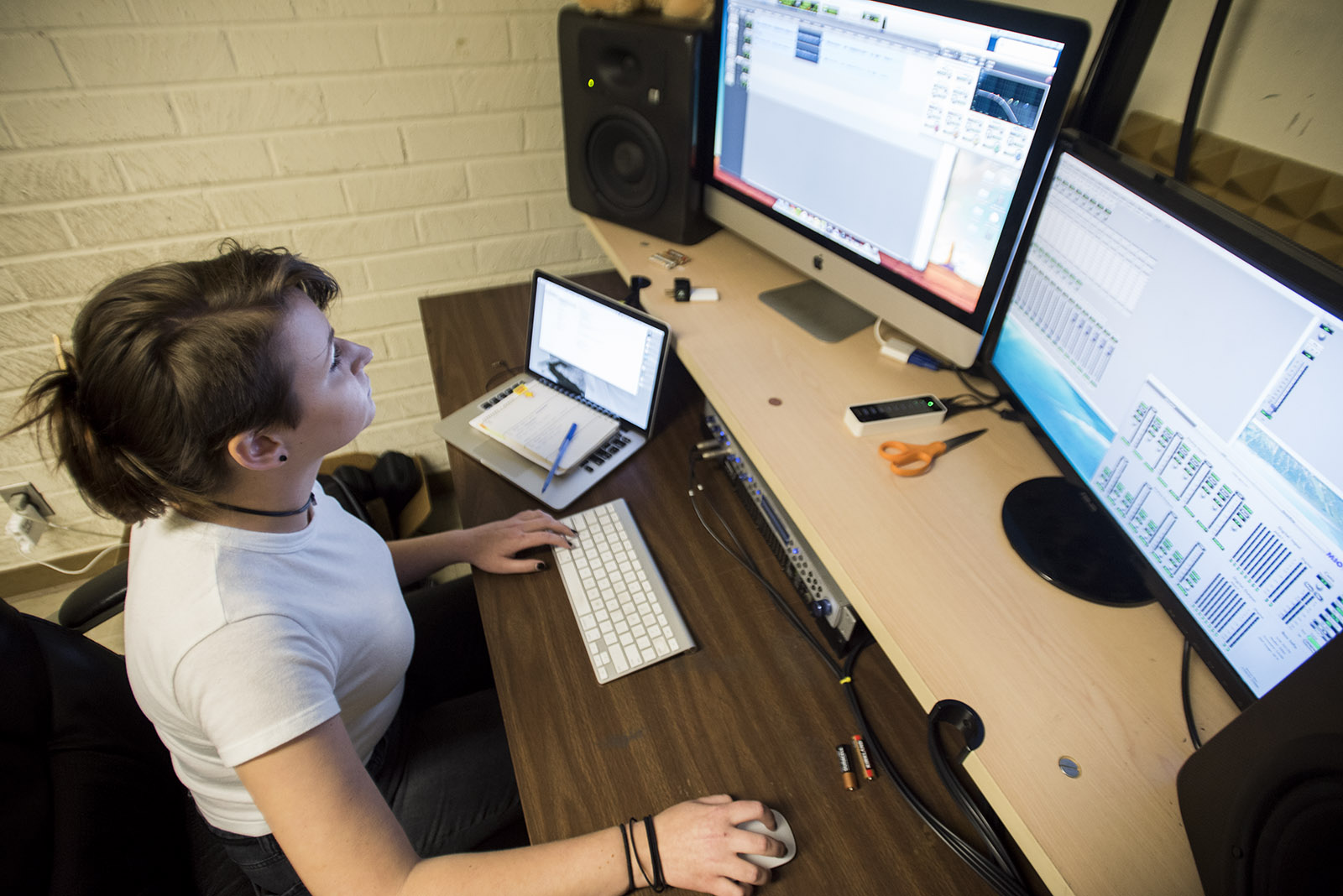Backstage Bruins: Student fuses Shakespeare play, ’30s aura with sound design

Assistant sound designer Katie Jost helped transform Shakespeare’s “A Midsummer Night’s Dream” to take place during the 1930s.
(Daniel Alcazar/Daily Bruin senior staff)
By Samantha Suman
March 3, 2016 12:28 a.m.
Katie Jost sits in the middle of the Little Theater in Macgowan Hall during a tech rehearsal, modifying sound effects, cutting music pieces and updating the cue sheet. The actors deliver the lines; her creations deliver the ambiance.
The third-year theater student is the assistant sound designer for UCLA School of Theater, Film and Television production of Shakespeare’s “A Midsummer Night’s Dream,” premiering Friday. The five-act show has been adapted to take place in the 1930s Dust Bowl. Although Jost’s absence from the stage does not put her in the spotlight, her contributions are crucial to the play’s atmosphere.
Raised in Boston by two music teachers, Jost grew up surrounded by music. She was a member of her high school and middle school band, and also acted in musical theater.
“I liked performing, that’s where I thought I was good at everything,” Jost said.
However, upon moving to California to begin her studies at UCLA, she decided to pursue directing. When she became a support technician and sound designer for Act III Theatre Ensemble’s production of “Complete History of America (Abridged)” in her first year, she decided to change her major to sound design.
“Being backstage is a lot easier once you are good at tech. It’s a good time,” Jost said.
She became involved with the crew of “A Midsummer Night’s Dream” after asking the head sound designer and UCLA lecturer Jonathan Snipes if she could be part of the show, as she enjoyed working with him the previous quarter and wanted to do so again.
Jost met frequently with the director and other designers involved in “A Midsummer Night’s Dream” to discuss the main concepts of the play before the production process.
Jost and Snipes pulled migrant-style music from the archives of the Library of Congress to create the desired “Okie”feeling, which she described as coming from the 1930s Midwest. They used songs recorded by migrant workers in working camps like “Sunny California” and “This Land is Your Land.”
“Eventually it comes together,” Jost said. “It’s much talking and previewing and sampling bits until you get it right.”
The musical interludes and the atmospheric elements of “A Midsummer Night’s Dream” are Jost’s favorite parts of the show. She said from old car sounds to forest winds, the repetitive sound bites act as cues to create the mood, tying together one part of the show with another.
“The sound really puts them inside of the sound world and you feel like you are hearing it in this mystical, ’30s Dust Bowl forest,” Jost said.
Jeffrey Pielago, a fourth-year theater student, is the sound board operator for “A Midsummer Night’s Dream.” His job is to put Jost’s and Snipes’ sounds into effect.
He was assigned the position to fulfill a class requirement, but said he has learned a lot about working backstage. The more time he has spent behind the scenes, the more appreciative he has become of the crew, he said.
As an actor, Pielago said he always tried to be appreciative of the work done by the crew. However, he never fully comprehended the technical elements of the show.
“That’s true sacrifice and true love for what you do and your art,” Pielago said.
Jost said the length of the play and tech rehearsals proved to be the hardest part of working on “A Midsummer Night’s Dream.” It was difficult to complete all of her designs given the short time frame that began during week one of winter quarter.
Regardless of backstage stress, Jost said she is drawn to sound design because of its unique ability to create a non-visual world. Her work is not always noticed right away, but it is present throughout the show. Working with music is rewarding for Jost, even though becoming a sound designer was not her original plan.
“It feels right when you know where you are and where you are supposed to be,” Jost said.


